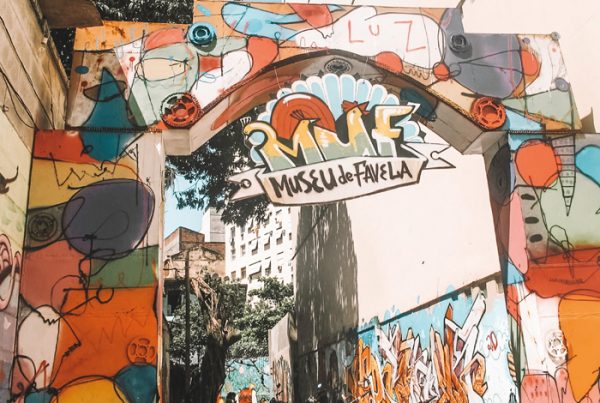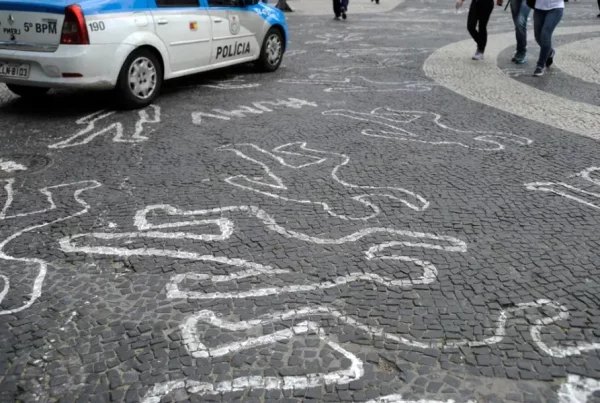Porto Maravilha: agents, power coalitions and neoliberalization
How did the social production process of Porto Maravilha take place? Who were its agents and which negotiations molded its form and institutional and financial arrangement, the backbone for the urban operation? In her study titled “Porto Maravilha: agents, power coalitions and neoliberalization,” Mariana Werneck shows us that the revitalization project of Rio de Janeiro’s harbor area is part of a global financialization process of the city that is determined, in the case of Porto Maravilha, by an original arrangement that combines public-private partnerships and capital market instruments. A process that determines a new pattern of relationship between the government and the private sector; on the one hand, inaugurating a new management system for the city and, on the other hand, deepening Rio’s socio-spatial inequality.
“Porto Maravilha: agents, power coalitions and neoliberalization” ² sheds light on the development process of the Porto Maravilha project, which was officially launched only six months after mayor Eduardo Paes had taken office – a process that was driven by the inclusion of the project in the list of Olympic venues for the 2016 Olympic Games. Considering the long history of hindrances and disagreements that had prevented the revitalization of the harbor area for the past 30 years, how is it that Eduardo Paes managed to kick-start the project? Which interests were addressed in order for the project to become viable?
“The research’s goal is to study the complex financial and institutional arrangement through which the bulk of interventions executed in the revitalization of Rio de Janeiro’s harbor area became feasible and sustainable, analyzing its instruments and reconstituting the negotiations that established its frame. With this perspective in mind, the analysis strives to reflect on the agents and their institutional role in the administration of Porto Maravilha, which may contribute to the understanding of an important share of the power coalition that prompts significant transformations in the entire city of Rio de Janeiro,” explains Mariana Werneck.
The Porto Maravilha Project
Measuring approximately 5 million square meters, the Porto Maravilha urban operation includes the neighborhoods of Saúde, Gamboa and Santo Cristo and the favelas of Providência, Pedra Lisa, Moreira Pinto and São Diogo, besides parts of São Cristovão, Centro, Caju and Cidade Nova; it entails a long list of urban interventions and infrastructure work, such as the restructuring of the water supply, sewer and communications networks, which should be concluded by the end of this year. The main highlight is given to the new mobility concept proposed for the city’s central area, which involves the demolition of the Perimeter Viaduct, pulled down between 2013 and 2014, and the implementation of a new public transport system, the so-called Veículo Leve sobre Trilhos (VLT – Light Rail Vehicle).
According to Mariana Werneck, the project is inspired by international experiences of harbor waterfront renovation that have proliferated since the 1960s, with the purpose of including Rio de Janeiro in the movement of global cities that has transformed, in the words of Eduardo Paes, “their centenary and decaying harbor areas – that became obsolete due to the speed with which the techniques and procedures for the production of wealth have evolved – into dynamic centers that irradiate economic, social and cultural development.”
Considered essential for repositioning the city in the services and tourism economy, Porto Maravilha had already been included in the first version of the city’s new strategic plan, Post-2016: A more integrated and competitive Rio, presented in December 2009 – and, posteriorly, revised and once again published in April 2012. After Rio was selected as host city for the Olympic Games, an achievement considered by Paes as a “good excuse for us to do something that was long demanded by the city and that we never seemed to get done,” the mayor hastened to include the harbor area in the list of Olympic venues – opposing Rio de Janeiro’s bid dossier, that provided the concentration of all facilities in Barra da Tijuca in the initial project.
After much insistence that the change be made, which finally happened in May 2010 with the International Olympic Committee’s approval, Porto Maravilha gained the status of Olympic legacy, a symbol of the city’s reinvention, concentrating the attention of all three levels of government. “A good relationship with the state and federal governments was indispensable for the implementation of the revitalization project, given the predominance of federal government terrains in the area and the need to implement safety procedures capable of subduing the region’s violent past,” explains Mariana Werneck.
The research shows that, besides the favorable political scenario, Eduardo Paes established institutional changes in the municipal government with the purpose of accelerating projects considered as priority by his administration. Already in his first year in office, following the mayor’s personal orders, a specialized management board was created in the Municipal Department for Urbanism in order to fast-tack permits regarding projects for the World Cup and Olympic Games (DIAS, 2012). Two other departments were also created: the Municipal Department for Public Order (SEOP) – which was in charge of executing the Choque de Ordem (Shock of Order) operation to fight urban disorder, one of his principal campaign promises; and the Extraordinary Department for Development (SEDE), responsible for attracting new businesses to the city, placed under the direction of Felipe Goes.
A former partner at McKinsey consultancy, Felipe Goes, once incorporated into the mayor’s staff, also accumulated the chairs of the Pereira Passos Institute and of the Municipal Council for Economic Development. Considered by Paes as “Rio’s salesman,” Goes took over the task of developing the economic model of the port district’s revitalization project and, to that end, envisioned Rio Negócios (Rio Businesses), an agency created in 2010 through a partnership with the Commercial Association of Rio de Janeiro whose focus was to recruit and support businessmen interested in investing in the city – an organization inspired by the English Think London and the Colombian Invest Bogotá agencies (PAES ANUNCIA…, 2008; PREFEITURA…, 2010).
Besides the aforementioned departments, the municipal administration also founded, through a complementary law, the Port District Urban Development Company (CDURP). CDURP was conceived to coordinate the implementation of the project for the revitalization of the city’s harbor area, and its leadership was trusted to Jorge Arraes, former real estate director of the pension fund of the Caixa Econômica Federal (a federal bank) employees, the so-called Fundação dos Economiários Federais (FUNCEF – Federal Bank Employees Foundation). Appointed as municipal secretary after the creation of the Special Department for Concessions and Public-Private Partnerships (SECPAR), in 2014, during Eduardo Paes’s second term, Arraes continuously kept track of the development of Porto Maravilha, now directly linked to this new department.
“Therefore, the institutional reforms and legal innovations sought to establish an administration based on interaction between government and private companies, and Porto Maravilha expressed this inflection. Besides being set up by a consortiated urban operation, the revitalization project signaled the creation of a Public-Private Partnership (PPP) that would be responsible for executing works and providing services – the first in the city and the biggest ever made in the country, created in October 2010 with a total value of R$ 7.6 billion, to be invested over 15 years. This way, Porto Maravilha represented the formation of a new development paradigm for Rio.
Forced removals
According to Mariana Werneck, on the other hand, the project has also received severe criticism, mostly highlighting the forced removals, which have diminished in the harbor area since the urban operation was first launched. The Port Community Forum denounced, in May 2011, that 800 families living in Morro da Providência were being threatened with removal by the municipal program for re-urbanizing slums, called Morar Carioca, which was presented by authorities in March 2010 as an initiative that would complement Porto Maravilha (FCP, 2011). However, the World Cup and Rio Olympics Popular Committee pointed out, in March 2013, that 430 families living in irregular occupations in the harbor area had been evicted since 2009.
Following the major protests that took place in Brazil in 2013, Rio de Janeiro’s State Legislature, through its Human Rights and Citizenship Committee, which is presided by state representative Marcelo Freixo (PSOL/RJ), gave special attention to the situation at Providência in its annual report, stating that 196 families had been evicted from the community until November of that year (CDDHC, 2013, p. 44). Many organizations also stress the lack of information regarding the implemented projects, as well as the lack of popular participation in the definition of main interventions and in the discussion of alternative housing solutions.
In her research, Mariana Werneck also presented what has been produced in the academic field with regards to understanding the removal procedures and the meaning of Porto Maravilha. “A group of dedicated researchers has been producing analyses that, generally speaking, perceive the revitalization project of Rio’s harbor area as a symbol of the subordination of the right to housing to the interests of increasing land value and commodification the city, highlighting the role played by the state and public funds in enriching private investors and producing a new segregation pattern,” tells us the researcher. And she goes on:
“Some authors call attention to the campaign donations received by then mayor candidate Eduardo Paes, which came mainly from real estate and building companies, and they also describe the role of strategic planning in the transformation of the city.”
The financial sector in Porto Maravilha
Mariana Werneck highlights the use of real estate investment funds and the participation of the Fundo de Garantia por Tempo de Serviço (FGTS – a workers’ severance indemnity fund) in the acquisition of the Certificados de Potencial Adicional de Construção (CEPACs – Additional Construction Potential Certificates) of the urban operation, in accordance with the institutional and financial framework drawn up for the aforementioned operation.
While the fund, whose guideline is profitability, expresses the conversion of land into a financial asset, the transference of FGTS resources signifies “a reduction in risks for private investors, who, from this moment on, have a favorable scenario for investments represented by the speeding up of construction work.” But the participation of public funds does not eliminate all risks involved in the operation, since “the resources to buy CEPACs obtained through the FGTS, 3.5 billion reais, can only guarantee a few years of the construction work and services provided in the PPP contract, but not all of them.
“Some authors show that public resources and speculation, together with the non-fulfillment of the social function of property, make it possible to ascertain that Porto Maravilha is one of the most perfect expressions of the city as an urban growth machine,” indicates Werneck. And she adds:
“This way, the city – propelled by a coalition of interests that gathers landowners, businessmen, entrepreneurs, real estate agents, local politicians, public service agencies, trade union sectors, cultural institutions, in short, all stakeholders in the city’s growth – would function as a business organization devoted to the growth of aggregated income through the intensification of the use of urban land.”
In this sense, Mariana Werneck’s study tries to capture the dynamics involving the construction of Porto Maravilha, alluding to the unequal appropriation of the transformations performed in the port area. “The complaints regarding the violent implementation of a new removal policy and the diminishing of the public sphere clearly show the existence of a group that, beyond suffering negligence, is deliberately excluded from the benefits promised by the revitalization process. However, after nearly seven years since the implementation of the revitalization process was initiated, we still know very little about the body of agents that was finally capable of implementing a project that has been pursued since the 1980s, as well as about their institutional involvement, their attributions and compensations or their mode of action, all of which remain undetermined,” explained the author.
Lack of critical reflection about the process
Mariana Werneck argues that the instruments used to make Porto Maravilha’s institutional and financial framework viable are not well-known, which sets up barriers to understanding how it will operate and to the development of a critical reflection about the project. Although the premises of the strategic plan have been widely debated, instruments such as PPPs and real estate investment funds haven’t been much explored, and even urban operations and CEPACs, which have been analyzed in depth by authors such as Mariana Fix (2004, 2007), constitute in Porto Maravilha a very particular and novel framework – enhanced by the institutional changes in course.
Conclusions
Mariana Werneck’s research points out that if at one given moment the revitalization of Rio de Janeiro’s harbor area was primarily an urbanistic project, Porto Maravilha is now an institutional and financial arrangement to manage territory capable of making many interests compatible – such is Eduardo Paes’s magic touch, conjured up behind the smoke veil produced by the Olympic Games.
“After the new mayor took over and a political alignment involving all three levels of government took shape, triggered by the PT-PMDB alliance, the participations of SPU (Superintendence of the Union’s Estate) and the Chief of Staff’s Office were coordinated with the federal government, removing the Ministry of the Cities’s ruling over the project and, as the investigations of Operation Lava Jato seem to show, organizing the entrance of the FGTS and of CEF as its operating agent. Benefiting from an existing legislation, but also producing, through creative destruction procedures, a new legal and institutional framework, this political conglomerate could finally combine many interests and make Porto Maravilha possible,” explains the researcher.
As restructuring strategies, the innovations managed to establish the institutional and financial arrangement; however, the agents’ aspirations could not break away from market expectations. “If it’s true that the wave of national and international capital views the Rio de Janeiro port as an opportunity to obtain higher profits, given the harbor district’s real estate potential, it is also true that its transformation into real estate products is fundamental for sustaining the operation financially and promoting the occupation of the harbor area, which will create a demand for the new infrastructures and services provided by the private consortium. Even the undertakings launched by construction firms that are a part of the consortiums that form the institutional and financial arrangement are not capable of unleashing the transformation of the harbor region’s AEIU (Area of Special Urbanistic Interest), an area of 5 million square meters,” indicates Mariana Werneck. She then concludes:
“The reintegration of the harbor area after many years of disinvestment, be it because of the effects of the eviction of inhabitants from these areas or because of the way the use of these public spaces for social reproduction was repressed, could be interpreted as a process of urban spoliation, what Harvey called accumulation through spoliation. The revitalization process presumes the transformation of the harbor area land, mostly public, into value in exchange, opening up a new frontier for its integration to the real estate up valuing circuits promoted by capital, at the same time in which it deprives the popular classes that utilize the land as value in use and can thus exercise, albeit tenuously, their right to the city. The escalation of urban conflicts claims the city as its battleground,” she concludes.
Dossier What Is at Stake in these Games? 2016 Olympics and the Commodification of the City of Rio de Janeiro.
Publicado em Produção acadêmica | Última modificação em 04-08-2016 19:28:13
















